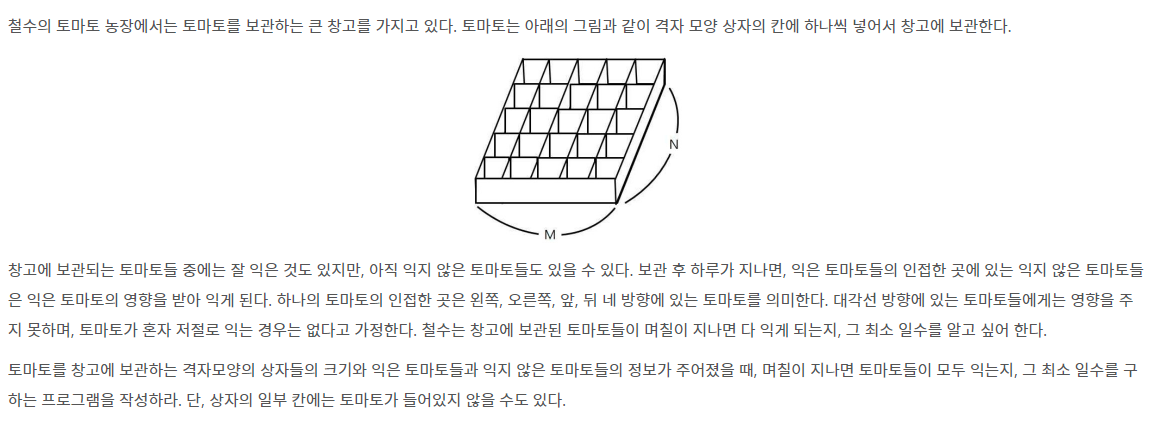📌 알고리즘 분류
해당 문제는 BFS에 대한 이해가 필요한 문제입니다.
BFS
📖 문제
BFS(너비우선탐색)을 통해 최단거리를 구하고 해결합니다.
💻 코드
#include<iostream>
#include<algorithm>
#include<queue>
#include<string.h>
using namespace std;
int m, n;
int graph[1001][1001];
queue<pair<int, int>> q;
int max_value = 1;
pair<int, int> point;
int dx[4] = { -1 , 1, 0, 0 };
int dy[4] = { 0, 0 , -1, 1 };
void BFS()
{
while (!q.empty())
{
point = q.front();
q.pop();
for (int i = 0; i < 4; i++)
{
int next_x = point.first + dx[i];
int next_y = point.second + dy[i];
if (0 <= next_x && next_x <= n && 0 <= next_y && next_y <= m)
{
if (graph[next_x][next_y] == 0)
{
q.push({ next_x,next_y });
graph[next_x][next_y] += graph[point.first][point.second] + 1;
}
}
}
}
}
int main()
{
for (int i = 0; i < 1001; i++)
{
memset(graph[i], -2, sizeof(int) * 1001);
}
cin >> m >> n;
int k;
int zero_count = 0;
for (int i = 0; i < n; i++)
{
for (int j = 0; j < m; j++)
{
cin >> k;
graph[i][j] = k;
if (k == 1)
q.push({ i,j });
if (k == 0)
zero_count++;
}
}
if (zero_count == 0)
{
cout << "0\n";
return 0;
}
BFS();
for (int i = 0; i < n; i++)
{
for (int j = 0; j < m; j++)
{
if (graph[i][j] == 0)
{
cout << -1 << "\n";
return 0;
}
}
}
for (int i = 0; i < n; i++)
{
for (int j = 0; j < m; j++)
{
max_value = max(max_value, graph[i][j]);
}
}
cout << max_value - 1 << "\n";
}


